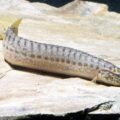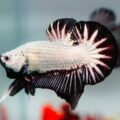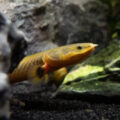Come learn how to distinguish between Peacock Eels and other spiny eel species using their physical appearance and characteristics. This guide also shares a complete care guide to maintain this eel throughout its ~8 year lifespan.

Peacock Eel: Elegant Nighttime Hunter
Finding the perfect species for your aquarium community can be challenging, especially when you want to make a statement. Macrognathus siamensis, which is sometimes called Peacock Eel, or “peacock-eye” because of its distinctive dorsal pattern, is worth your consideration.
Although the Peacock Eel is often famous for being a commercial food source (mainly in Southeast Asia), did you know it’s also a pretty species as an aquarium fish? If this is your first Macrognathus siamensis intro, don’t worry.
In this peacock eel overview, you’ll learn about this species’ background, care needs, and breeding insights. So gear up!
Author’s Note: Check out our post on The 13 Freshwater Aquarium Eels That Can be Kept as Pets for even more eels!
Natural Background & Habitat

You can’t adequately cater to an aquarium pet without understanding its origins, so here’s an insight into the Macrognathus siamensis habitat.
This species prefers dim waters and muddy edges because it comes from the slow water of the Mekong and Chao Phraya Rivers in Thailand, Vietnam, Laos, and Cambodia.
You should also add soft sand that’s gentle on the skin and dense plants as covers in your peacock eel environment.
Knowing the peacock eel’s natural habitat isn’t enough. You must also understand its physical traits for easy identification.
Species Identification
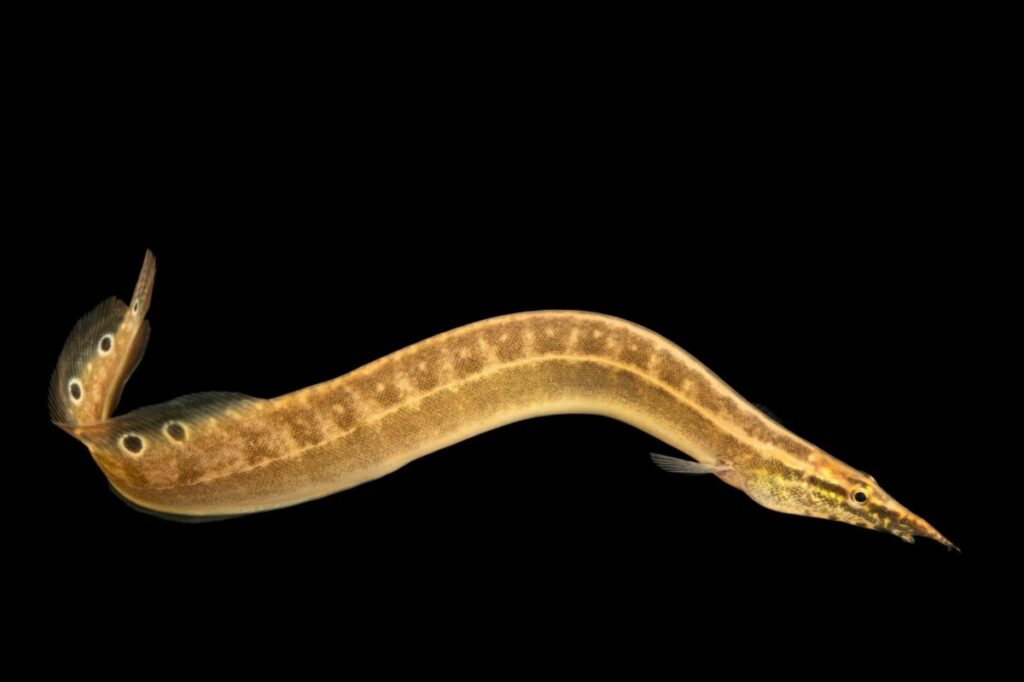
Identifying peacock eel variants is the same as with other species, but if you’ve never done it before, here is how:
- Physical attributes
- Characteristics traits
Physical Attributes
You’ll recognize a Peacock Eel by its slender, elongated body, which has no scales but unique eye-like spots on its dorsal fins.
This spiny eel has an elongated snout and mouth with small eyes that are sharp in the dark, and grows between 8 and 12 inches long.
Characteristic Traits
Because of the peacock eye patterns on the dorsal fins, beginners and even some pros mistake this species for the Fire Eel. That’s why you should rely on characteristics as a backup identifier when physical appearance confuses you.
Peacock Eel vs Fire Eel

| Peacock Eel | Fire Eel |
| They’re smaller, growing to a maximum of 12 inches | They’re larger, growing up to 3 feet long |
| Tan or Yellowish-Green bodies with lateral pale-yellow stripes and peacock eye spots on dorsal fins | Dark Brown or Black bodies with red or gold lateral stripes |
| Broad carnivorous diet, including all kinds of live foods | Narrow carnivorous diet restricted to large live foods |
| Minimum tank size: 30 gallons | Minimum tank size: 125 gallons |
Author’s Note: Check out our post on The Fire Eel (Mastacembelus Erythrotaenia) for an in-depth look at this species!
Now that we’re done with Macrognathus siamensis identification basics, let’s discuss setting up its ideal aquarium.
Aquarium Setup Essentials

Before starting your peacock eel tank setup, you should get some essentials based on this species’ natural habitat.
Make a checklist of these peacock eel aquarium requirements,
| Aquarium Essential | Details |
| Tank | Minimum of 30 gallons rectangular tank |
| Layout | Hiding Tubes and caves for resting |
| Substrate | Soft sand for burrowing |
| Decor | Dense plants |
| Lighting | Dimmable LED lights |
| Flow Type | Gentle |
Preparing these essentials is only the beginning because there’s still one step before you can confidently say you’ve made the best tank setup for peacock eel fish.
Water Conditions & Maintenance

Penn-Plax Cascade All-in-One Aquarium Canister Filter
Found On Amazon
Your peacock eel’s water conditions are as essential as the tank layout and decor because they are a significant part of its environment.
Set the following ideal water parameters for the peacock eel species to survive outside their natural habitat:
- Temperature: 75–80°F
- pH Level: 6.5 – 7.5
- Hardness: 107 – 268 ppm
After setting optimal water conditions, your work doesn’t stop. You must incorporate substrate cleaning into your peacock eel tank maintenance to prevent detritus buildup. Also use a Master Test Kit to routinely test your tank’s water quality then make adjustments as needed.
Use a strong but gentle filter to clean the tank after feeding and change 20 – 35% of the water weekly to keep it pristine.
Author’s Note: Checkout the post on The 7 Best Aquarium Canister Filters Reviewed (2024) for an in-depth guide on choosing the right filter for your aquarium!
Diet & Feeding
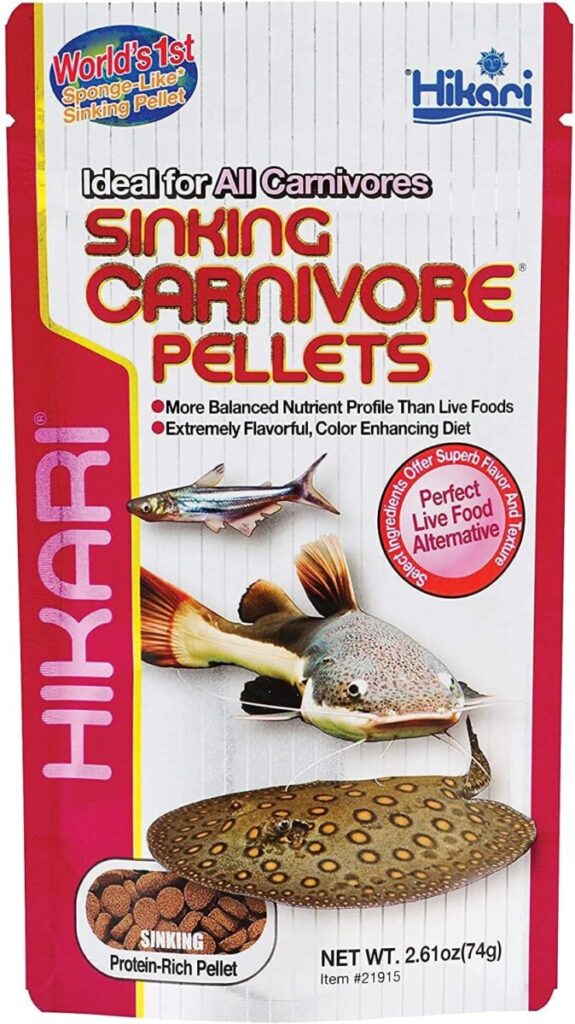
Sinking Carnivore Pellets for Pet
Found On Amazon
Have you ever wondered, “What do peacock eels eat”? You’re about to get answers.
Earlier in this guide, we highlighted peacock eel food preferences to distinguish them from similar species, so let’s dive into the details of their feeding patterns.
This species is strictly carnivorous but not confined to a specific food type. If you train your pet, it will eat sinking pellets with live or frozen worms, small crustaceans.
Because of its activity patterns, nighttime is the best peacock eel feeding period. It’ll take nocturnal bites of sinking pellets overnight, and you can clean the leftovers in the morning.
Compatibility & Tank Mates
It’s time to pick suitable fish for your peacock eel tank if you’re building a community aquarium. Naturally, this species is peaceful and good with small fish, but you must be careful because they’re predatory carnivores.
Ensure the tank mates you choose pass the peacock eel compatibility test. This test checks for environmental needs since they’d be in the same tank, feeding patterns, temperament, and personality traits.

Using these parameters, small Rasboras, Gouramis, and peaceful bottom dwellers are ideal peacock eel tank mates. On that note, avoid tiny and certain small fish that may become prey to your pet.
Health Concerns & Disease Prevention
Telling you to prioritize your pet’s health by providing the best care possible helps with peacock eel disease prevention. It may surprise you that the most basic peacock eel health issues come from poor tank management and care practices.
The most common peacock eel diseases are bacterial infections from contaminated substrates, parasites living in dirty water, or weak immunity from poor diets.
Key take away form this section is to maintain proper and stable water parameters, without this the tank’s water quality can degrade, which can cause a wide range of issues from cloudy aquarium water to illness and mass die off.
So, the best prevention comes from following the healthcare instructions in this guide and going the extra mile for your pets, like giving them occasional salt dips to prevent parasite growth.
Lifespan & Maintenance Level
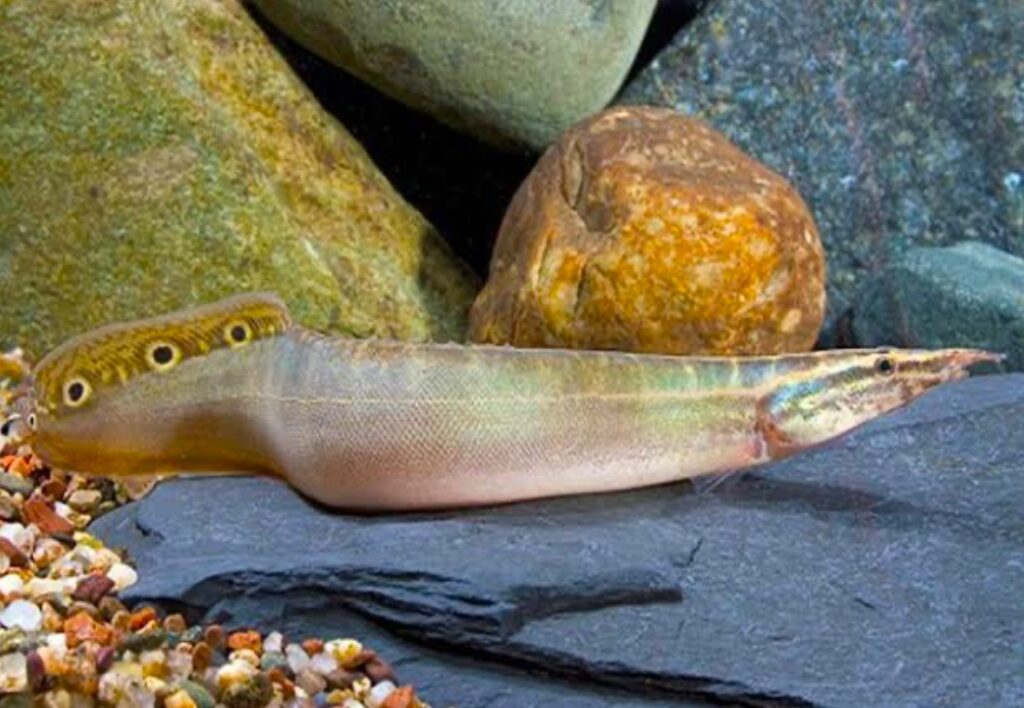
Mid-level and expert hobbyists are the ideal peacock eel care level to handle this pet, and if you follow this guide to a tee, your pet can survive up to 6 – 8 years.
Having answered the question of “how long do peacock eels live?”, you can understand why their moderate care load best suits aquarists with a little more experience than beginners.
You can also see from the average peacock eel lifespan that bringing this species into your tank is a long-term commitment. So, don’t do so lightly.
Conclusion: Why the Peacock Eel Shines
This guide isn’t ruling out the peacock eel for beginners, but warning you as a new eel enthusiast of what to expect and their care requirements.
In fact, fresh aquarists would enjoy so many peacock eel benefits like its calm temperament, suitability for community tanks, low-stress nighttime presence, manageable diet, and much more.
So, the question isn’t “why keep a peacock eel?”, but “can you handle its care?”, “Would you commit 6 – 8 years to giving it the best aquarium living experience?
If yes, start the process today, and please share your thoughts in the comment section.







